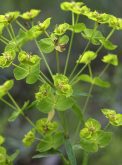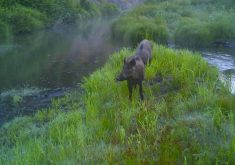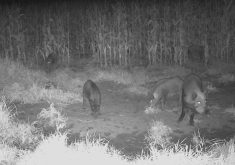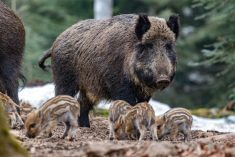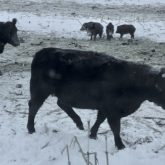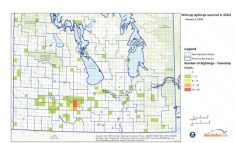Glacier FarmMedia – Canadian wild pigs are furtive and rugged, and its uncertain how many of them roam across Western Canada.
Understanding and eradicating them is now a nation-wide crusade, the first Canadian Wild Pig Summit revealed. The multi-day event was held in Brandon April 22-24.
Why it matters: Invasive wild pigs are noted for damage to agriculture and ecosystems.
Read Also
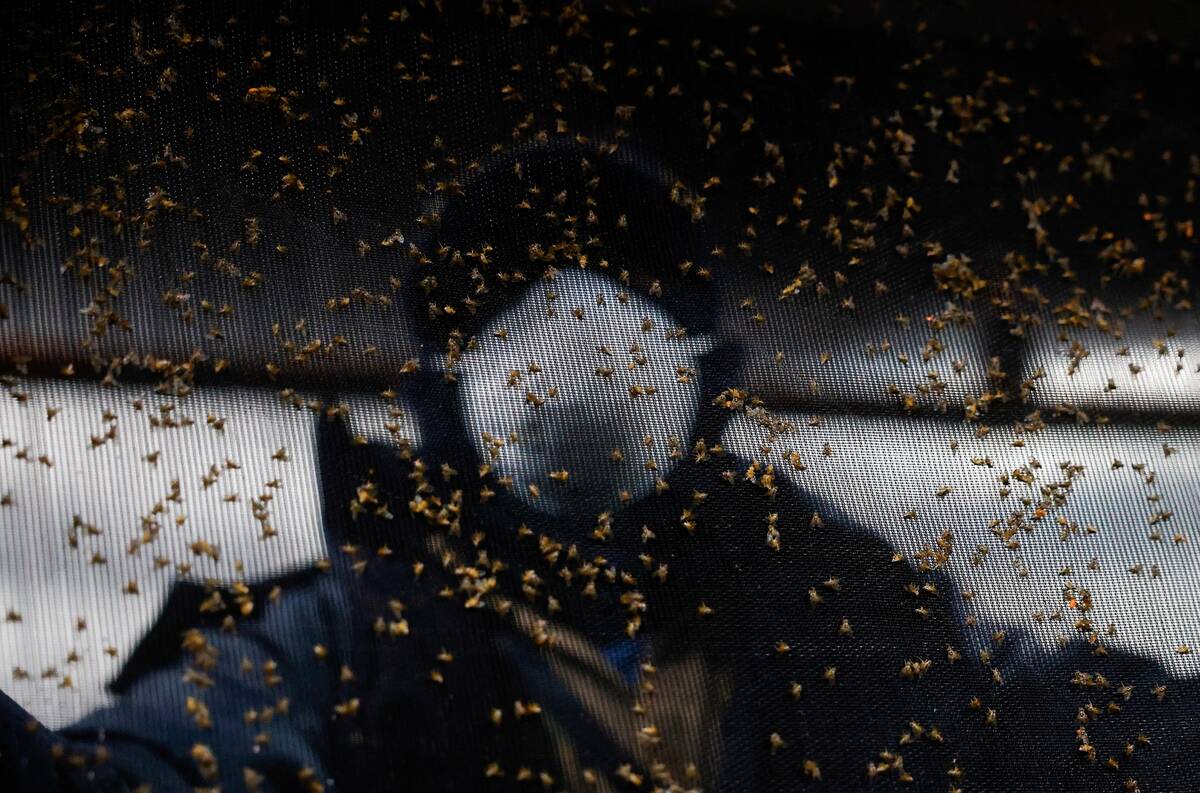
Canada too cold for New World screwworm
New World screwworm is closing in on the U.S. from Mexico, but the deadly livestock parasite isn’t likely to dig a surviving population in Canada, even if the fly species sneaks over the border.
“We’re finding a lot of diseases in the wild population,” said Mathieu Pruvot, a researcher and expert on wildlife-livestock interactions with the University of Calgary’s veterinary college.
The pigs’ risk as a disease reservoir is the stuff of nightmares for livestock producers, a fear that has been realized in Europe, where wild infections of African swine fever have complicated efforts to curb the disease.
But wild pigs pose other dangers. They are aggressive and destructive pests of wilderness areas and compete for food with deer and other native wildlife. They tear up pasture and gobble corn crops like candy.
Opening rounds
The Brandon event brought together wild pig control professionals, researchers, farmers and government officials from North America and Europe.
For all the media attention paid to wild pigs in recent years, research into the problem has just begun. Control methods are still evolving and eradication is in its early stages.
Most experts at Brandon sounded optimistic about the potential of eliminating wild pigs from Western Canada, despite debate over whether they are already out of control.
Net and cage systems developed in the United States and Europe appear to work well in Western Canada, although they must be customized for the brutal Prairie winter and unique behaviour of western Canadian wild pigs.
The species has surprised researchers with how far they roam. Visiting experts from a successful wild pig control project in Germany’s Brandenburg forest and a collaring project by the U.S. Department of Agriculture reported much bigger ranges than academic thinking previously held.
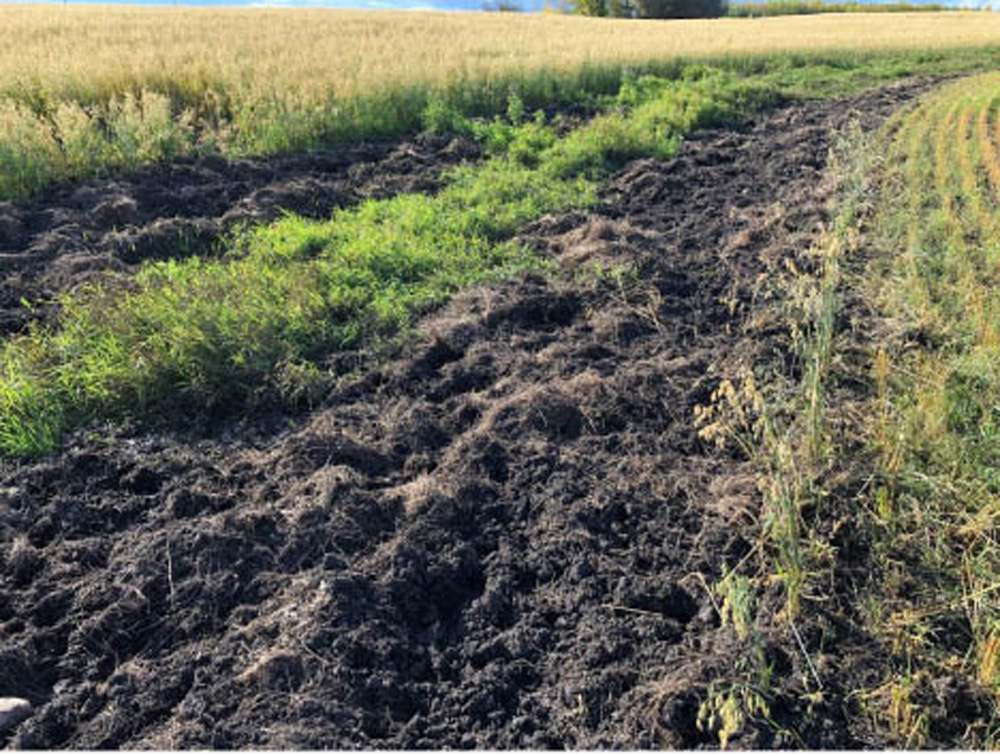
In Germany and the U.S., wild pigs wander for dozens of kilometres, with the same individuals appearing far away from previous sightings. They are willing to swim large rivers and cross highways and hillsides.
Manitoba’s Squeal on Pigs program has found that the pigs wander far and wide, a conclusion that fits with the work by the University of Saskatchewan’s Ryan Brook.
How big is the problem?
A spirited back-and-forth arose over the number and spread of wild pig populations and the level of threat they pose for out-of-control spread.
Brook is a pioneering researcher in the area and has raised the issue of invasive wild pigs for more than a decade. He has taken a maximalist approach to the risk and size of the problem, referring to wild pigs as “super pigs” with an extreme risk of uncontrolled population growth and spread into the U.S. His work has often captured public attention.
Many associated with provincial wild pig control programs feel Brook exaggerates the risk and that his maps of sightings create an unduly alarmist perception of the problem. Most in that camp believe current wild pig populations are small and can be eradicated if carefully managed.
Some on the minimalist end of the scale believe there are no wild pigs breeding in their provinces, and that sightings come from sporadic releases of domestic animals or incursion from out-of-province pigs. Brook feels that view ignores the reality of rooting and breeding observed across the Canadian countryside.
No hunting
However, there is widespread agreement that recreational hunting should not be part of any control plan.
While many hunters and rural residents might assume they are helping by shooting a wild pig or two, experts agree that is counterproductive. Even if one pig in a group (called a sounder) is killed, the rest will scatter from the danger. New sounders will then arise from the scattered females.
Warning hunters against ad hoc shooting has been a priority in all provinces and hunting organizations have also relayed the warning.
Patchwork
Pig fighters across Canada may not be pulling in the exact same direction. Each province has its own set of rules and regulations spawned by provincial legislation. The pigs might be treated as wildlife or livestock, be covered by different departments or have different legislative treatment.
Most provinces have government departments leading control efforts. Manitoba’s program, which uses the same Squeal on Pigs name that is shared with other provinces and U.S. state organizations for wild pig control, is hog industry-based, which its organizers believe allows greater flexibility and speed of response.
Government support
The conference brought significant representation from Manitoba’s politicians and government officials. Manitoba Agriculture Minister Ron Kostyshyn and Manitoba Métis Federation agriculture minister David Beaudin both attended, along with the province’s deputy agriculture minister and an assistant deputy minister.
Beaudin said all communities in Manitoba must “make a collective effort” to get the wild pig problem under control.
Kostyshyn sounded a hopeful note. He announced that the provincial Squeal on Pigs program will receive more than $600,000 per year for the next four years to boost its control efforts. With enough commitment, wild pigs can be eliminated, he believes.
“We can make it happen,” said Kostyshyn. “Let’s get it done.”
– Ed White is a reporter with the Western Producer.




